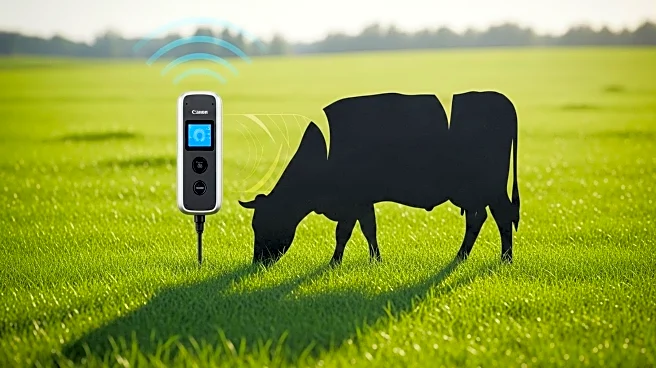What's Happening?
The Global Smart Agriculture Livestock Monitoring Market is experiencing significant growth, with projections indicating a compound annual growth rate (CAGR) of 15.20% from 2025 to 2032. This expansion is driven by the increasing adoption of technology in agriculture, particularly in livestock monitoring systems. These systems utilize sensors, GPS, and IoT technology to track the health, location, and activity of livestock, thereby optimizing feeding, breeding, and disease management. Major manufacturers involved in this market include Afimilk Ltd., Zoetis Inc., and Cainthus Ltd., among others. The market study highlights the segmentation by important regions and the involvement of key players from various countries, including the United States, Israel, and the Netherlands.
Why It's Important?
The growth of the Smart Agriculture Livestock Monitoring Market is crucial for the agricultural sector, particularly in enhancing productivity and efficiency. By integrating advanced technologies, farmers can improve livestock management, leading to better health outcomes and increased productivity. This technological shift supports precision farming, which is essential in meeting the rising global demand for meat and dairy products. The adoption of these systems can also contribute to sustainable farming practices by reducing waste and optimizing resource use. However, challenges such as high equipment costs and connectivity issues in rural areas may hinder widespread adoption, impacting smaller farms and regions with limited technological infrastructure.
What's Next?
As the market continues to expand, stakeholders can expect further integration of cloud-based analytics and the development of drone-enabled livestock monitoring systems. These advancements will likely drive more efficient farm management practices and enhance data-driven decision-making. Additionally, efforts to address the challenges of high costs and connectivity issues are anticipated, potentially through government support or industry collaborations. The focus will be on increasing farmer awareness and training to ensure effective utilization of these technologies.
Beyond the Headlines
The shift towards smart agriculture represents a broader trend of digital transformation in the farming industry. This transition not only impacts economic aspects but also raises ethical considerations regarding data privacy and the digital divide between large and small-scale farmers. The long-term implications may include changes in labor dynamics, with a potential reduction in manual labor and an increased demand for tech-savvy agricultural workers.













